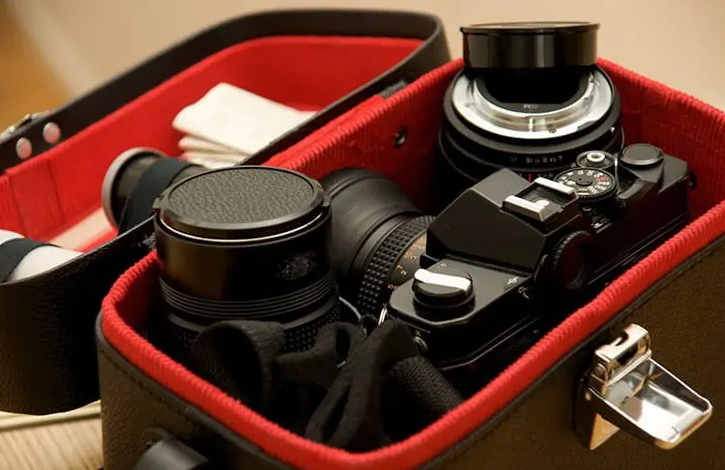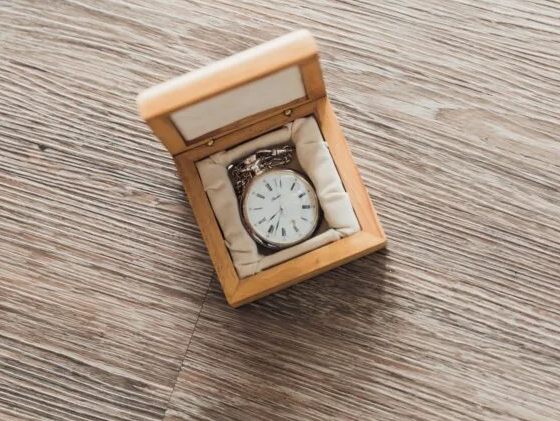Whether soft cases are better than hard cases depends on your specific needs such as durability, portability, and the type of items you’re carrying.
Table of Contents
Features of Soft Cases
Material and Construction
Soft cases usually feature materials like nylon, polyester, or other fabrics that offer a combination of durability and flexibility. These materials often come with water-resistant or waterproof coatings to provide extra protection. High-quality zippers and reinforced stitching add to the structural integrity of the case. The interior often includes padding or foam inserts for additional cushioning.

Portability
One of the standout features of soft cases is their portability. Soft cases are generally lighter than their hard case counterparts, making them easier to carry around. Many come with adjustable straps or handles that add to the convenience factor. Some even offer extra pockets or compartments for better organization, a feature rarely found in hard cases.
Flexibility
Flexibility is another significant advantage of soft cases. Unlike hard cases, which have a fixed shape and size, soft cases can expand slightly to accommodate items of varying sizes. This makes them a popular choice for people who need a more versatile storage solution. They are particularly useful for irregularly shaped items that might not fit well in a hard case.
Cost
When it comes to cost, soft cases usually offer a more budget-friendly option. The materials and construction methods used are generally less expensive than those in hard cases. This makes soft cases a go-to choice for people who are looking for a cost-effective yet functional solution for storing and transporting their belongings.
Features of Hard Cases
Material and Construction
Hard cases usually use materials like polycarbonate, ABS plastic, or aluminum to ensure rigidity and protection. These materials give the case a solid structure that can withstand significant impacts. Many hard cases also come with secure locking mechanisms, enhancing their durability and longevity. High-quality hinges and fasteners keep everything tightly sealed. Some even include custom foam inserts that provide precise fittings for the items you intend to store or transport.
Durability
One of the most significant advantages of hard cases is their durability. These cases are designed to endure harsh conditions, from extreme temperatures to impact forces. Because of their rugged construction, hard cases often outlast soft cases, especially in environments that involve frequent travel or rough handling. This durability makes them ideal for professionals in fields like photography or military who often work in challenging conditions.
Security Features
When it comes to securing valuable items, hard cases typically offer more robust solutions than soft cases. Many hard cases come with reinforced locks or even biometric security systems, offering an extra layer of protection against theft or unauthorized access. They also usually feature more robust closures, like clasps or latches, compared to the zippers on soft cases. This makes them popular among people who need to transport sensitive or high-value items, such as musical instruments or firearms.
Cost
Hard cases often come with a higher price tag than soft cases, primarily because of the materials and construction methods used. However, many people consider this a worthwhile investment, especially when transporting valuable or delicate items that require a higher level of protection. If you’re considering a long-term storage or travel solution, the initial cost of a hard case may be offset by its durability and enhanced security features.
Comparative Analysis
Soft vs Hard: Weight
Soft cases are usually much lighter than hard cases. This can be crucial for travelers who want to stay within airline baggage weight limits or for anyone who has to carry their case for extended periods.
| Criteria | Soft Cases | Hard Cases |
|---|---|---|
| Average Weight | 1-3 lbs | 4-12 lbs |
| Material Weight | Light fabrics such as nylon weigh less | Polycarbonate, ABS plastic, and aluminum are heavier |
| Added Features | Extra pockets can add minimal weight | Locks and reinforcements can add significant weight |
Soft vs Hard: Protection
Hard cases generally offer superior protection against impacts, moisture, and other environmental factors. They are more suitable for fragile items or electronics that need extra care. Soft cases, while offering basic protection, cannot withstand harsh conditions as well as hard cases can.
| Criteria | Soft Cases | Hard Cases |
|---|---|---|
| Impact Resistance | Limited; padding may offer some protection | High; materials are hard and durable |
| Water Resistance | Variable; depends on material and coating | Usually waterproof or highly water-resistant |
| Dust & Dirt | Some resistance but not airtight | Usually airtight seals for complete protection |
Soft vs Hard: Adaptability
Soft cases are often more adaptable and flexible, making them useful for oddly-shaped or varying items. Hard cases are more rigid but may offer customizable foam inserts for a snug fit.
| Criteria | Soft Cases | Hard Cases |
|---|---|---|
| Flexibility | Can stretch to accommodate different items | Rigid; fixed dimensions |
| Customization | Limited; some have adjustable compartments | Often have customizable foam inserts |
Soft vs Hard: Aesthetics
When it comes to aesthetics, the choice between soft and hard cases often boils down to personal preference. Soft cases often come in a variety of colors and patterns, whereas hard cases tend to offer a more professional look. Brands involved in fashion often release stylish soft cases, while hard cases are generally geared toward a professional or industrial aesthetic.
| Criteria | Soft Cases | Hard Cases |
|---|---|---|
| Style Options | Many colors, patterns, and styles | Usually more limited, focus on professional look |
| Branding | Often branded or customizable | Limited customization, often plain or industrial |
Use Case Scenarios
For Electronics
Electronics like laptops, tablets, and camcorders require a case that offers protection from impact, water, and dust. Hard cases are generally the go-to option for these items because they provide a higher level of security and can be outfitted with foam inserts for a snug fit. However, for less fragile electronics or for short commutes, a padded soft case may suffice.
- Hard Case: Ideal for long-distance travel, shipping, or environments where the electronic item could be jostled or exposed to harsh conditions.
- Soft Case: Useful for day-to-day use, short commutes, and where heavy protection is not a major concern.
For Musical Instruments
Whether it’s a guitar, violin, or trumpet, musical instruments are often fragile and require special care. Hard cases are usually preferred by professional musicians who travel frequently for concerts or tours. However, soft cases, or gig bags, are popular among students or hobbyists for local travel and lighter use.
- Hard Case: Suitable for air travel, long road trips, and provides the best protection against accidental damage.
- Soft Case: Convenient for local commutes, practices, and where the instrument is not exposed to significant risks.
For Photography Equipment
Cameras and their accessories like lenses are sensitive to dust, moisture, and impact. Here, hard cases with foam inserts customized to fit each piece of equipment are generally the preferred choice, especially for professional photographers who have expensive gear.
- Hard Case: Offers superior protection and is ideal for professional photographers who need to ensure their expensive equipment remains in pristine condition.
- Soft Case: Can be useful for amateur photographers or for situations where the equipment is not at risk, such as indoor photo shoots.
For Sporting Goods
From tennis rackets to fishing gear, sporting goods come in all shapes and sizes. Soft cases are generally more versatile and easier to carry, making them more popular for these items. However, for expensive or fragile sporting goods, a hard case may be more appropriate.
- Hard Case: Useful for expensive or specialized sporting equipment that needs to be protected during travel or storage.
- Soft Case: More convenient for day-to-day use and local transport. Ideal for items like gym clothes, tennis rackets, or other less fragile sporting goods.

Environmental Considerations
Sustainability
When it comes to environmental impact, materials used in soft cases like nylon or polyester can sometimes be derived from recycled plastics. However, the process to manufacture these fabrics can still be energy-intensive. On the other hand, hard cases made from aluminum or plastics can be more easily recycled but may also be resource-intensive to produce initially. Some brands are now offering eco-friendly options made from sustainably sourced materials.
- Soft Cases: Eco-friendly soft cases can range from $30 to $100 depending on the brand and features.
- Hard Cases: Sustainable hard cases, often made from recycled or biodegradable materials, typically start at $100 and can go up to $300 or more.
Durability and Longevity
Durability is an environmental factor as well, as more durable products need to be replaced less often, reducing waste. Hard cases generally offer more durability compared to soft cases and can last many years if well-maintained. Soft cases, depending on the quality and usage, may have a shorter lifespan, leading to quicker replacements and more waste.
- Soft Cases: A good quality soft case may last 2-5 years and cost around $20-$50.
- Hard Cases: With proper care, hard cases can last over 10 years and range in price from $50 to $300 depending on the quality and brand.
Carbon Footprint
Both types of cases contribute to carbon footprint through the materials used in their construction and their manufacturing process. However, due to the heavier weight and more resource-intensive materials, hard cases often have a larger carbon footprint. Consumers may want to consider offsetting their carbon emissions when purchasing a new case.
- Soft Cases: Generally lighter and may result in less fuel consumption during shipping, slightly lowering their carbon footprint.
- Hard Cases: Usually heavier and bulkier, leading to higher emissions during shipping and production.
What is the average lifespan of a hard case versus a soft case?
- Hard Cases: With proper care, they can last over 10 years.
- Soft Cases: Typically last between 2-5 years depending on usage and quality.
How do the costs compare between hard and soft cases?
- Hard Cases: Range in price from $50 to $300 depending on the brand and features.
- Soft Cases: Usually cost around $20-$50.
Which type of case is more environmentally friendly?
- Hard Cases: Typically have a larger carbon footprint due to heavier weight and resource-intensive materials.
- Soft Cases: Generally lighter, may use recycled materials, and have a slightly lower carbon footprint.
What are the weight differences between hard and soft cases?
- Hard Cases: Typically weigh between 4-12 lbs depending on size and material.
- Soft Cases: Usually weigh between 1-3 lbs.
Which is better for electronics, a hard or soft case?
- Hard Cases: Offer superior protection and are ideal for fragile electronics. They may cost around $100-$300 for sustainable options.
- Soft Cases: Suitable for less fragile items and short commutes. Eco-friendly options range from $30-$100.
How do soft and hard cases compare in terms of adaptability?
- Hard Cases: Rigid but may offer customizable foam inserts.
- Soft Cases: Can stretch to accommodate different items and some have adjustable compartments.
Which type of case is better for frequent travelers?
- Hard Cases: Offer better protection but are heavier, which may be a concern for airline baggage limits.
- Soft Cases: Lighter and easier to carry, but offer less protection.
Are there any speed advantages for accessing items in soft vs hard cases?
- Hard Cases: Usually have locks and multiple latches, which can slow down access.
- Soft Cases: Often have zippers or Velcro, allowing for quicker access to the stored items.







